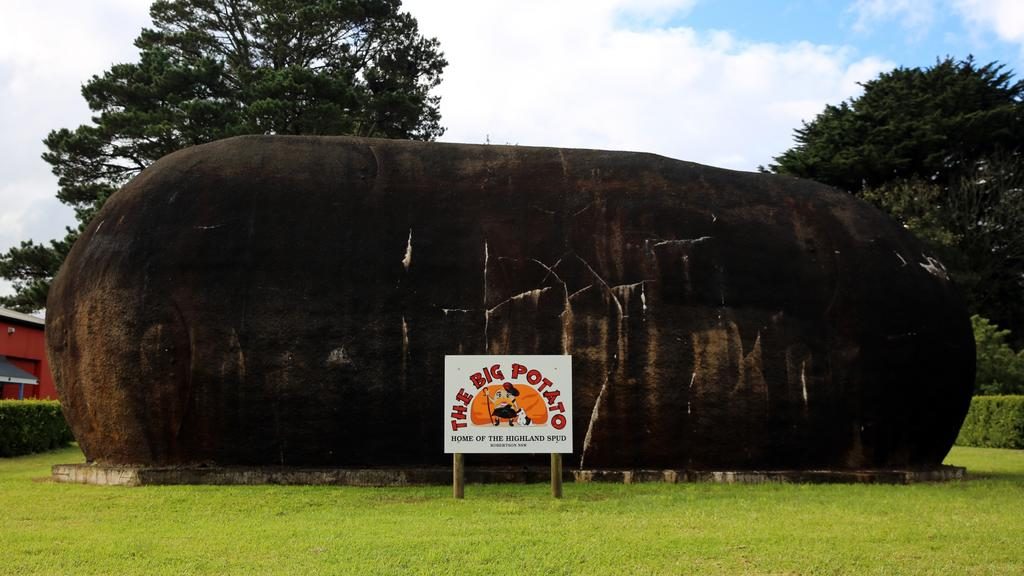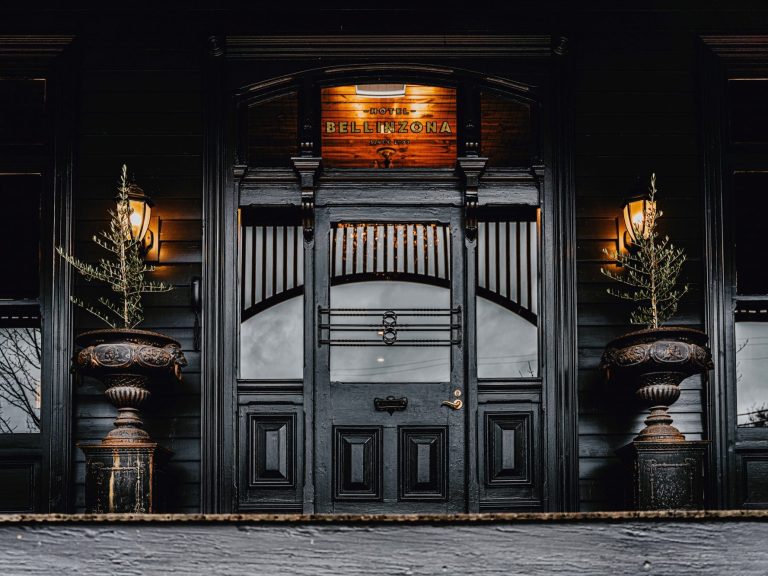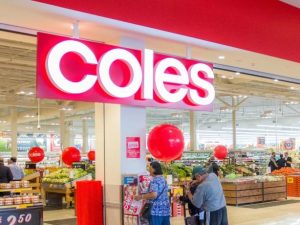Investor chips in to buy Robertson’s iconic Big Potato

The iconic Big Potato, located in the small NSW Southern Highlands town of Robertson, has been sold for an undisclosed sum.
The hollow 10-metre-long spud – which has been a-peel-ing to selfie-hungry visitors since it was built by local potato grower Jim Mauger in 1978 to promote his industry – was sold along with a neighbouring supermarket.
Agent Steve Myers of Myers Realty wouldn’t reveal the sale price, but the 200sqm potato block had previously had a price guide of $920,000 and the supermarket $1.2 million, according to media reports.
Buyer to maintain landmark
Neil and Heather Tait, who have owned the supermarket for more than 30 years, purchased the famous potato next-door in 2014 and have maintained it as a tourist attraction, selling souvenirs from the Friendly Grocer franchise.
Mr Tait said this week the new owner intends to maintain the towering ‘tater as a landmark, ”a lovely spot to stop, have a break, eat lunch and of course take a picture.”

The big spud has long been a tourist attraction. Picture: Getty
As well as the potato, which has received a fresh coat of mission brown paint in recent years, the block has expanses of grass, hedging and picnic benches.
”The new owner wants to keep it looking as nice as it is now, which is good to know,” said Mr Tait, who along with his wife will continue to run the supermarket for several years.
”Most people in town love it. It’s a real focal point for Robertson, a reason to stop. It’s possible you’d just drive through otherwise,” he said of the town of just under 2000 residents.
Not everyone is a fan though. Earlier this year, the Big Potato was named Australia’s Sh*ttest Big Thing, according to comedy website Sh*t Towns of Australia. Rather than deter visitors though, it seemed to attract them.
‘A great block’ in main street
The selling agent said the supermarket and Big Potato were offered for sale separately or together, but the purchaser, an investor, saw value in both.
”You certainly don’t see properties like this come up very often,” Mr Myers said.
”People in Robertson are very passionate about the potato. A massive number of tourists stop, have a picnic and have a pic taken in front of it.
”But aside from that, it’s a great block of land in the main street or Robertson, which is enjoying a real surge in prices for commercial property. It’s a growing and popular village,” he added.
‘Connection to place’ is key
Lori Modde, general manager of tourism consultancy Visitor Economy Development, said it’s not simply size that draws visitors to attractions such as the Big Potato.
”Big things are often connected to a place through their representation of something synonymous with an area. It’s a way of expressing what is unique about the destination. It’s not necessarily the attraction to something big, it’s more so being curious about why say the pineapple, the Merino is there,” she said.
”That being said, it’s always a good photo opportunity and another ‘been there done that’ moment,” Ms Modde said.

Australia’s Big Merino is a drawcard for the town of Goulburn. Picture: Getty
The tourism expert said while the trend for overseas travel is growing again post-Covid, there are many Australians ”reconnecting with their homeland and taking the domestic tourism opportunity”, making attractions such as the Big Potato potentially valuable.
She said road trippers with time on their hands, often retirees, would be drawn to ”ticking off” an attraction such as the Big Potato.
”Family and younger markets are more enticed to regional travel because of other reasons – visiting friends and relatives or attending events – and an opportunity to build in visits to the big things along their way can add to a journey, but they’re not inspired by the big thing for the visit in the first place,” she said.







